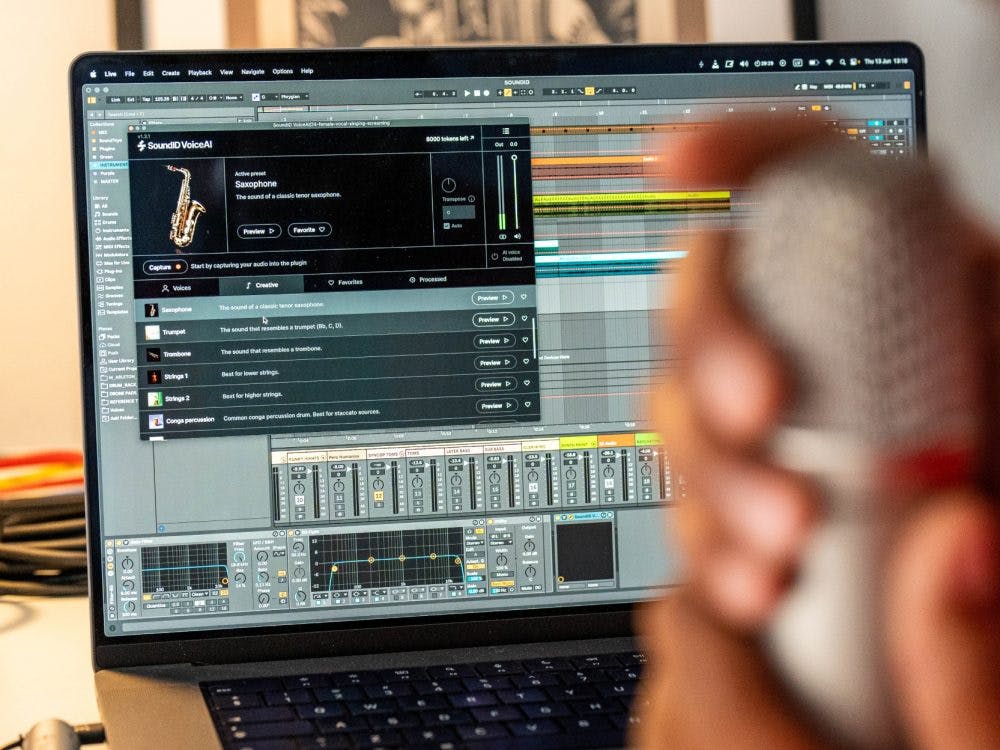Artists can stay authentic while using AI-generated sound by treating these tools as creative collaborators rather than replacements for their artistic vision. The key lies in maintaining creative control, using AI to enhance rather than define your sound, and ensuring your personal artistic identity remains at the forefront of every creative decision. Authenticity comes from how you curate, modify, and integrate AI-generated elements into your unique creative process.
What does authenticity mean for artists using AI sound tools?
Artistic authenticity with AI sound tools means preserving your creative identity while leveraging technology to expand your sonic palette. Rather than replacing your artistic voice, AI becomes an extension of your creative toolkit.
Authenticity in the context of AI music tools isn’t about avoiding technology altogether. It’s about maintaining intentional creative choices and ensuring that every AI-generated element serves your artistic vision. When you use AI-generated sound, you’re still making creative decisions about what to include, how to modify it, and where it fits within your composition.
The definition of authenticity evolves as technology advances. Just as electric guitars were once considered “inauthentic” compared to acoustic instruments, AI sound design represents another evolution in musical expression. Your authenticity comes from how you use these tools to express something genuinely yours.
How do you balance AI assistance with personal creative vision?
Successful balance comes from using AI music tools as starting points rather than finished products. Think of AI-generated sounds as raw materials that you shape, edit, and transform to match your creative intent.
Start by establishing your creative goals before engaging with AI tools. Know what emotion, energy, or message you want to convey. This clarity helps you evaluate whether AI-generated elements support or distract from your vision. When working with AI outputs, apply your own processing, layering, and arrangement decisions.
Set boundaries for AI involvement in your creative process. You might use AI for generating initial ideas or filling specific gaps in your compositions, but maintain control over the overall direction and final decisions. This approach ensures that AI serves your creativity rather than driving it.
What are the best practices for integrating AI sounds into original compositions?
Seamless integration requires treating AI-generated audio as you would any other sound source in your production workflow. Focus on how these elements complement your existing material rather than dominating the mix.
Process AI-generated sounds through your own effects chains and treatments. This personalisation helps blend artificial elements with your organic recordings. Layer AI sounds with traditional instruments to create hybrid textures that feel cohesive within your artistic style.
Consider the source material you feed into AI systems. Clean, dry recordings without excessive processing typically yield better results for transformation. When creating multiple vocal parts or backing tracks, record separate takes rather than copying and processing the same audio multiple times to maintain natural variation.
| Integration Approach | Best Practice | Benefit |
|---|---|---|
| Layering | Blend AI sounds with organic instruments | Creates cohesive sonic texture |
| Processing | Apply personal effects and treatments | Maintains artistic signature |
| Arrangement | Use AI elements to support, not lead | Preserves creative control |
Why is sound calibration important when working with AI-generated audio?
Accurate sound reproduction becomes vital when evaluating AI-generated content because you need to hear exactly what the AI has created before making creative decisions about its use in your music.
Proper monitoring ensures you can distinguish between AI-generated artefacts and intentional sonic characteristics. Without calibrated playback, you might miss subtle processing effects or frequency imbalances that could affect how your final mix translates across different listening environments.
Calibrated monitoring helps you make informed decisions about which AI-generated elements truly serve your music. You can better assess the quality and character of AI outputs, leading to more authentic creative choices about what to keep, modify, or discard in your compositions.
How can artists maintain their unique sound signature with AI tools?
Maintaining your sound personalization requires developing consistent approaches to how you select, modify, and integrate AI-generated elements across your work. Your signature comes from your creative decision-making process, not just the sounds themselves.
Develop personal workflows for processing AI outputs. Whether you consistently apply certain effects, favour specific frequency ranges, or layer AI elements in particular ways, these repeated creative choices become part of your artistic fingerprint.
Use AI tools to complement your existing strengths rather than compensate for perceived weaknesses. If you’re known for intricate harmonies, use AI to create supporting vocal textures. If rhythmic complexity defines your style, employ AI-generated sounds within your established rhythmic frameworks.
The most important aspect is maintaining creative intentionality. Every AI-generated element should serve a specific purpose in your composition, chosen and shaped by your artistic judgment rather than included simply because the technology made it possible.
As AI audio technology continues evolving, your authenticity as an artist remains rooted in your creative vision and decision-making process. Tools like SoundID VoiceAI offer new possibilities for creative expression while allowing you to maintain full ownership and control over your artistic output. We believe that the future of authentic music creation lies not in avoiding new technologies, but in thoughtfully integrating them into your unique creative process.
If you’re ready to get started, check out our VoiceAI plugin today.



